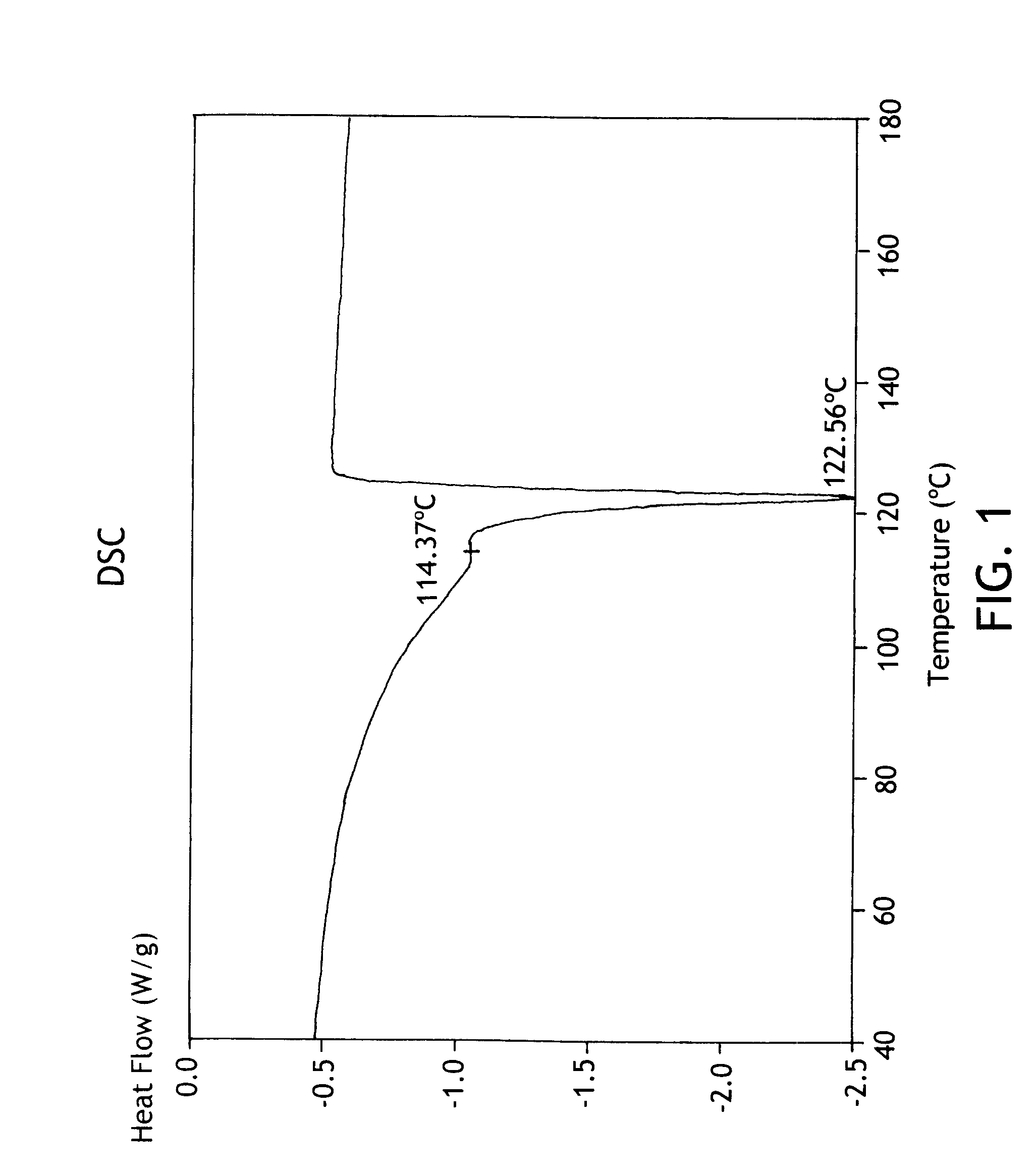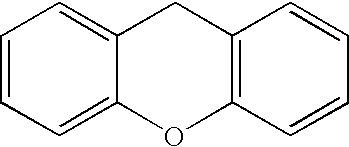Plasticizer for thermoplastic materials
a thermoplastic material and plasticizer technology, applied in the direction of synthetic resin layered products, packaging, woodworking apparatus, etc., can solve the problems of unsatisfactory need for a new material composition or method to modify the thermoplastic polymer materials to increase their relative plasticity, few successful, and difficult to achieve. , to achieve the effect of increasing the relative stress-strain toleran
- Summary
- Abstract
- Description
- Claims
- Application Information
AI Technical Summary
Benefits of technology
Problems solved by technology
Method used
Image
Examples
example 1
[0034]To about 10 grams of polyethylene pellets are added 0.05 grams of 4,5-dibromofluorescein and the mixture heated to 130° C. and stirred to mix the dye into the liquid polymer. This colored mixture is then allowed to cool. Chunks of this mixture are then placed between sheets (14″×14″) of aluminum foil and placed in a Carver hot plate press (The Carver Press Company, Columbus Ohio) where the plates had been heated to 140° C. The polymer between the sheets are pressed to 4000 lb and held for 1 minute. After the polymer film samples were allowed to cool the circular films were removed from the foil. Samples of the film were then taken and analyzed using dynamic mechanical analysis (DMA) and thermogravimetric analysis (TGA) techniques.
example 2
[0035]About 10 grams of polyethylene pellets are heated to 130° C. and stirred for the same amount of time as example 1. After cooling chunks of this solid was then placed between sheets (14″×4″) of aluminum foil and placed in a Carver hot plate press where the plates had been heated to 140° C. The polymer between the sheets is pressed to 4000 lb and held for 1 minute. After the polymer film samples are allowed to cool the circular films were removed from the foil.
PUM
| Property | Measurement | Unit |
|---|---|---|
| stretch elongation tolerance | aaaaa | aaaaa |
| temperature | aaaaa | aaaaa |
| temperature | aaaaa | aaaaa |
Abstract
Description
Claims
Application Information
 Login to View More
Login to View More - R&D
- Intellectual Property
- Life Sciences
- Materials
- Tech Scout
- Unparalleled Data Quality
- Higher Quality Content
- 60% Fewer Hallucinations
Browse by: Latest US Patents, China's latest patents, Technical Efficacy Thesaurus, Application Domain, Technology Topic, Popular Technical Reports.
© 2025 PatSnap. All rights reserved.Legal|Privacy policy|Modern Slavery Act Transparency Statement|Sitemap|About US| Contact US: help@patsnap.com



